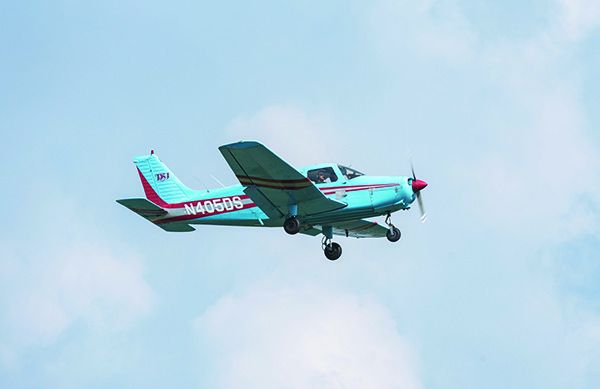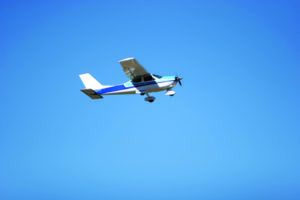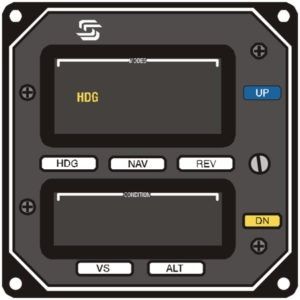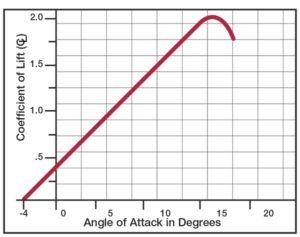
We all know—or should know—that an airplane’s wing stalls at its critical angle of attack. While that value varies from plane to plane and wing to wing, once that value is exceeded, the stall occurs, every time. What happens next depends on a variety of factors, including aerodynamic loading, attitude, bank angle, power and control surface deflection. Depending on these variables, the airplane could simply mush into a descent, spin off on a wing, or break straight ahead and pitch down. In fact, those same variables can determine the type of stall that occurs and how likely we are to get into one.
Planning and practicing stall entries and recoveries should be part of any proficiency training a pilot undertakes. And as with so many other maneuvers, we can do stalls on our own, without an instructor, which is both good and bad. The good part is it’s cheaper without an instructor. The downside is no one is around to watch for and catch mistakes or bad habits. And, as with so many things we do in an airplane, planning is important: questions like the type of stall to be performed and when recovery is to be initiated need to be settled before beginning. Here are some things to consider.
POWER-ON/POWER-OFF
These two stalls likely were your first introduction to what happens when the wing’s critical angle of attack is exceeded. They both typically are demonstrated straight-ahead, with little bank angle. The only real difference, other than the power setting, is the airplane’s pitch angle—not to be confused with the wing’s—as the airplane seems to “hang on its prop” at high power. The basic idea of these straight-ahead stalls, of course, is to set power accordingly, keep the wings level or with no more than a 15-degree bank, and slowly increase back pressure on the pitch control to the point either the aerodynamic stall indication occurs or the warning system activates. Depending on the desired outcome, either immediately recover or allow the stall break to occur, and then recover.
Along the way and to help prevent a spin, the rudder must be used to keep the inclinometer’s ball centered and maintain coordinated flight. With a power-off stall, it’s a lot easier to center the ball and keep it there than when some or all the power available is added. A power-on stall typically results in a sharper, more abrupt stall break if the maneuver is allowed to progress that far. And the rudder input applied to keep things straight in a power-on stall must be removed at the break. If it’s not removed, a yawing moment will be introduced, which is something most airplanes can respond to by entering a spin.
Modestly powered airplanes may require full throttle to adequately demonstrate a power-on stall. Others will not, and a less-than-full power setting can be used. It’s important for checkride purposes that the pilot and the instructor/examiner agree on how much power is to be used. In our view, an ideal power setting would be one in which the rudder pedal is almost to the limit of its travel at the break, if a full break is the intent. Accordingly, it’s much more important to center the rudder when a high-power stall breaks than when the power-off variety is performed. It’s okay to adjust power while increasing back pressure and keeping the wings level to achieve the desired results.
Straight-ahead stalls, regardless of power setting, should be considered an entry-level maneuver, something every pilot can do and which has a limited application. That’s not necessarily true for other stalls in our series.

No matter which type of stalls in the series you’re practicing or demonstrating, there are some basic “rules” that apply and with which wise pilots comply:
Altitude
You must have adequate altitude above the surface to allow recovering from a botched demonstration. The POH for many popular airplanes state the maximum altitude loss in a power-off stall is on the order of a couple hundred feet, but that’s for professional test pilots in controlled conditions. We consider 3000 feet agl a minimum altitude and prefer 4500.
Clearing Turns
A common error in stall demonstrations is failing to perform clearing turns. Ensuring nearby traffic won’t pose a conflict should be reflexive, just as going out of your way to avoid an obvious training area when passing by. Many pilots focus more on performing the clearing turns themselves than actually looking outside and from side to side during them.
Proper Configuration
It should go without saying that you can’t practice or demonstrate a specific type of stall if the airplane isn’t properly configured. That includes carb heat, landing gear, flaps, cowl flaps, power settings, and weight and balance, among other considerations. Retract wing flaps for accelerated stalls. Never perform stalls in a multi-engine airplane during single-engine operations.
ACCELERATED STALL
When I first heard the term “accelerated stall,” I wondered how an airplane could stall when it’s accelerating. Enlightenment ensued when I came to understand the “acceleration” involved greater aerodynamic loads than steady-state 1G flight.
Accelerated stalls are used to emphasize that the wing’s critical angle of attack can be exceeded when flying faster than the published stall speed. As the FAA’s Airplane Flying Handbook (FAA-H-8083-3B) puts it, the idea is to demonstrate what can happen “during improperly executed turns, stall and spin recoveries, pullouts from steep dives, or when overshooting a base to final turn.”
An accelerated stall is typically demonstrated during steep turns of about 45 degrees bank and in the cruise configuration, i.e., gear and flaps up. As with all stalls, begin the demonstration below the airplane’s published maneuvering speed (VA) adjusted for weight. You can initiate the 45-degree-banked turn above VA and use the resulting higher G-force to slow the airplane, but airspeed must be below maneuvering speed before the break.
If you’ve done any steep turns lately, you know that maintaining coordinated flight is a key measure of their quality. That goes double in performing an accelerated stall. At the break of an accelerated stall during coordinated flight, both wings will tend to stall at the same time, and the nose will tend to pitch downward. If coordination is not maintained at the break, the stall may feature a bank-angle change until the wings’ angle of attack is reduced. Regardless of coordination, the stall buffet likely will be more enthusiastic and the break itself more sudden if it’s allowed. A stall alerting system may not provide the same advance warning as it would at 1G loading.
With all that going on, it should be obvious that an accelerated stall is more aggressive than one performed in a wings-level attitude. By introducing a steep bank and additional G-loading, the stall can occur much more quickly, surprising an inexperienced pilot. The accelerated stall, of course, is the technical name for the so-called “moose stall,” which can occur when a pilot tries to circle something on the ground without paying attention to the airplane’s angle of attack.
Recovery from an accelerated stall is conventional: reduce the angle of attack, level the wings and add power as necessary. Because of the potential for a yawing moment to develop leading to spin entry, an accelerated stall should not be prolonged and the recovery initiated without delay.
Accelerated stalls are not required on a private-pilot checkride but are for other certificates.

No matter which kind of stall you’re demonstrating, or the kind of airplane, the steps necessary to return to straight-and-level flight are basically the same:
1. Disconnect Autopilot/Wing-leveler
Yes, an autopilot can get you into a stall. You have to help it, of course, by reducing power or with some other means, but unless you’re flying one of the newer autopilots that incorporate flight envelope protection that can help prevent a stall, George can take you for a ride. During stall recovery, altitude hold, along with heading or nav mode, can interfere with your control inputs and drastically increase the forces necessary to re-establish controlled flight.
2. Reduce the Angle of attack

Push forward on the pitch control to reduce AoA below the critical value until stall-warning indications are eliminated before proceeding to the next step. It’s likely you’ve added nose-up trim to perform the maneuver, and it’s not doing you any favors when recovering from a stall. Position the trim for a higher airspeed and get the nose down.
3. Level The Wings/Manage Yaw
We always need to avoid simultaneous large-scale control inputs in more than one axis, so after reducing AoA, roll wings-level to eliminate any horizontal lift component and allow the wings to develop maximum vertical lift. Proactively manage yaw with rudder to minimize the chance of a spin.
4. Increase Power
You’ll typically need/want to add power after leveling the wings but you may already be at a high setting. Do it smoothly, while managing pitch and yaw changes. As terrain allows, establish the desired flightpath with coordinated control input.
CROSS-CONTROL STALL
A cross-control stall is reminiscent of a late turn to final, when the pilot overshoots and increases the bank angle and nose-up pitch input along with rudder input. A skidding turn likely develops, with too much rudder for the rate of turn as opposite aileron is applied to correct the increasing bank angle that results. The difference in lift between the inside and outside wing means the airplane may rapidly enter a spin if the critical angle of attack is exceeded. When relatively low to the ground, as one would be when turning final, that’s bad.
According to the Airplane Flying Handbook, “The nose may pitch down, the bank angle may suddenly change, and the airplane may continue to roll to an inverted position, which is usually the beginning of a spin.” For these reasons, following the recommended stall recovery procedure by reducing AoA until stall indications are no longer present, roll wings level with ailerons and control yaw before entering a spiral or spin.
The Airplane Flying Handbook also notes that, “The safest action for an ‘overshoot’ is to perform a go-around. At the relatively low altitude of a base-to-final approach turn, a pilot should be reluctant to use angles of bank beyond 30 degrees….”
The cross-control stall is not required on private or commercial pilot practical tests but is fair game on the flight instructor checkride. Nevertheless, it’s one with which all pilots should be familiar.

A secondary stall is what happens when we’re too quick on the controls and try to return to level flight with insufficient speed, exceeding the wing’s critical AoA again. A lot of this has to do with seeing the airspeed indicator happily back in the green arc as things on the ground get bigger. We then tend to apply too much nose-up pitch input in an early attempt to return to straight-and-level flight. The punchline is that when we pitch up—sometimes abruptly—we increase G-loading, which can be enough to stall the wing again.
Secondary stalls also can occur when we insufficiently reduce the wing’s angle of attack and never really recover from the initial stall, perhaps by trying to use power alone without pitching nose-down. Unloading the airplane a bit by pushing the nose down—but not enough—may eliminate buffeting and/or deactivate the stall warning system long enough to fool us into thinking we’ve fully recovered from the initial stall when we haven’t.
Eliminate the chance of a secondary stall by employing the steps outlined in the sidebar on the opposite page. If you get into a secondary stall, do the recovery again, this time correctly.
ELEVATOR TRIM STALL
Picture yourself making a power-off approach to a runway. You’ve deployed full flaps and have applied pitch trim to reduce the need for nose-down control forces when another plane pulls out in front of you and you’ve got to go around. Your first reaction is to apply full power, which forces the nose to pitch up, sometimes quite abruptly. Without immediate nose-down input on the pitch control and/or nose-down trim, the airplane may quickly approach a stalled condition. That’s an elevator-trim stall.
The reason these stalls are special is because the sudden power application is accompanied by increased propwash over the tail, making it more effective. When the pitch trim is adjusted for a slow airspeed, the airplane will want to seek that airspeed regardless of the power setting and the nose will rise when full power is applied. Recognizing the condition and acting to prevent a stall break is the goal here, instead of allowing the full stall to develop. That said, with an appropriately high entry altitude, the pilot may allow the break to occur.
Better is to not take the kinds of steps resulting in a nose-up, full-power, flaps-down configuration at low airspeed or altitude. For example, instead of immediately applying full power when the decision to go around is made, add sufficient power to arrest the descent first, retrim for the configuration change, and ensure the airplane remains under control. With sufficient airspeed and after the descent is arrested, retract half the flaps, then bring in climb or full power, and continue to retrim as necessary. Retract the flaps fully and retrim as necessary.
The elevator trim stall may be demonstrated on a flight-instructor practical test but isn’t required for other certificates. But the stall shows us what can happen during a go-around flown by any pilot when power is applied and attention isn’t paid to the airplane’s attitude. Given that this stall is most common when initiating a go-around, it’s appropriate to note that this and any other intentional stall should be done at altitude.
STOP STALLING AROUND
Understanding and practicing, and then perfecting, a stall series like this can be a key element of a regular proficiency program or “rusty pilot” remedial training. Although these stalls can be performed solo, it’s preferable to get an instructor to run through them with you if it’s been a while since you’ve done any. After that, and presuming you correct any bad habits the instructor identifies, they can be an important part of any confidence-building maneuvers you care to fly.



